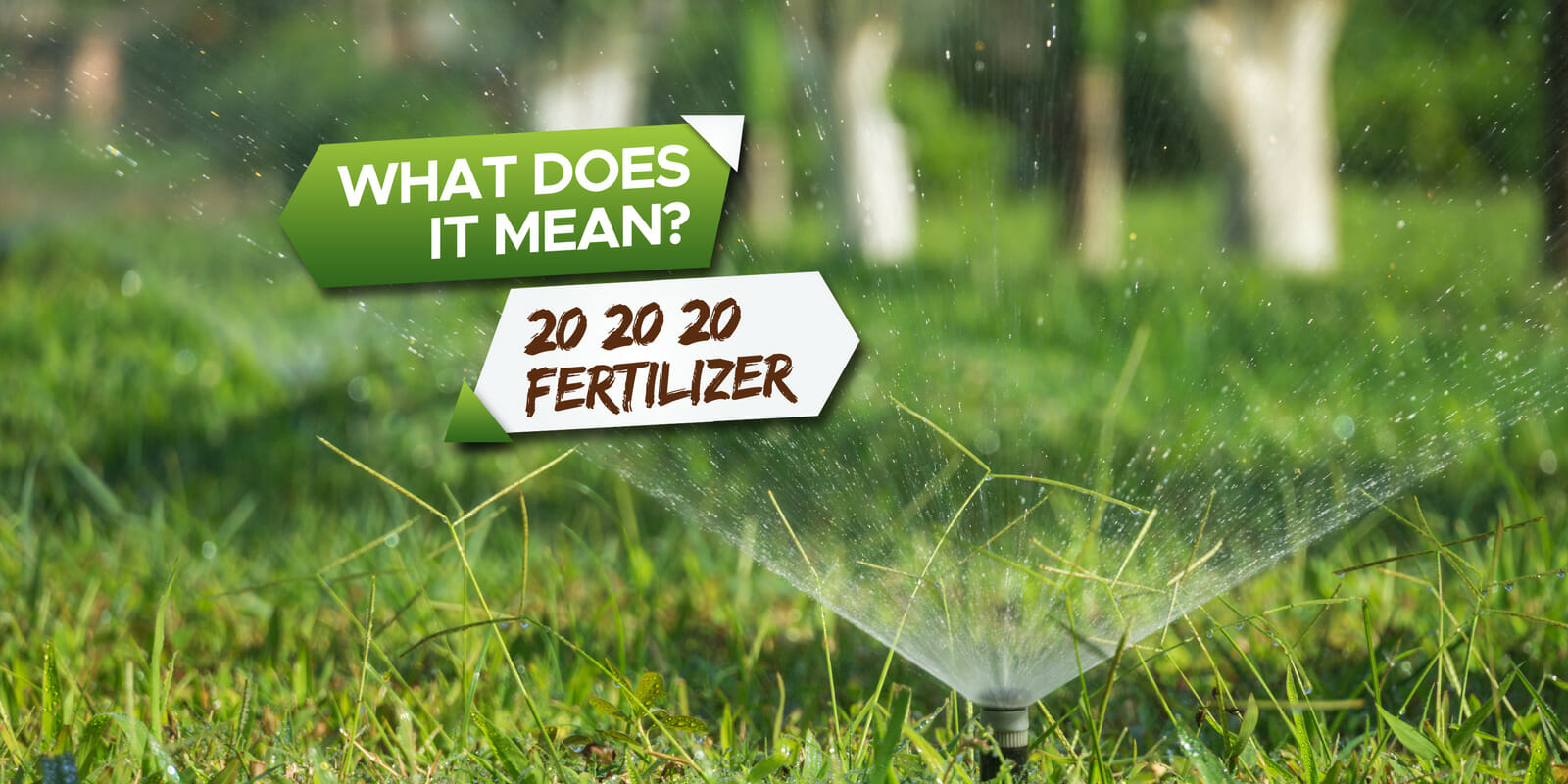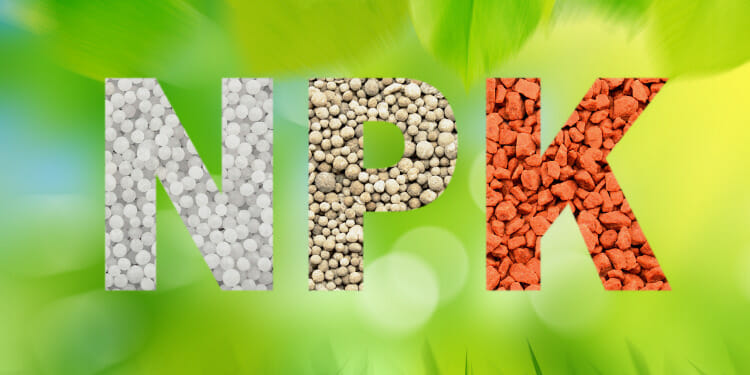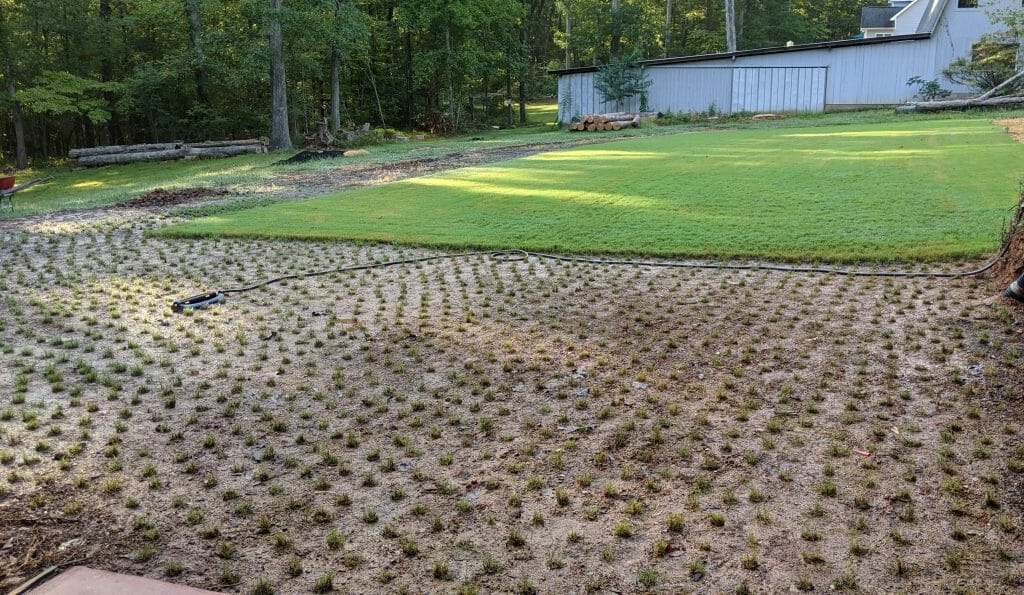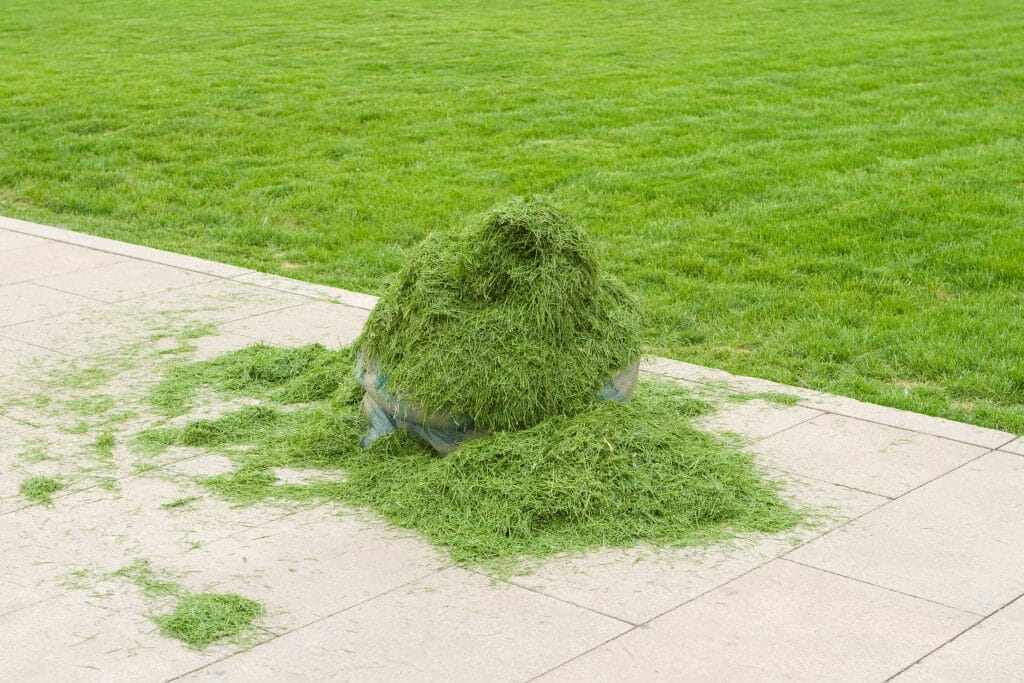
When it comes to growing a lovely thick, green lawn, you want to apply the best possible fertilizer to keep your grass growing strongly. But, are you confused about which fertilizer you should be using? Or, do you look at a fertilizer pack and wonder what the 20:20:20 actually means.
So, what Does 20 20 20 Fertilizer Mean? If your fertilizer pack has 20:20:20 on it, it simply means that it has equal parts of nitrogen, phosphorus and potassium. This ratio is often referred to as the N:P:K ratio where N is the nitrogen content, P is the phosphorus content and K is the potassium content.
Therefore, a pack that has the N:P:K ratio simply means that it contains 20% nitrogen, 20% phosphorus and 20% potassium. In fact, this is the perfect ratio to use on lawns in spring as the grass needs these three nutrients in equal proportions to promote new growth.
Now you might look at this and wonder what the other 40% of fertilizer is made up of. Generally, there will be a list of other ingredients on the back of the pack. These will include a variety of trace elements such as magnesium, calcium, and iron as well as fillers that help make distribution easier.
Let’s discuss why nitrogen, phosphorus and potassium are the key requirements for a healthy lawn.

Why Your Lawn Needs An Equal Dose Of N:P:K
The three elements of nitrogen, phosphorus and potassium are essential for healthy plant growth no matter what it is that you’re growing. However, the perfect ratios of these elements can vary for different types of plants.
These elements are known as macronutrients and are the primary nutrients that plants need for healthy root, stem, leaf, fruit and flower growth. Here’s what each one does for your lawn.
Nitrogen Promotes Healthy Green Growth
Nitrogen is essential for healthy green growth above the ground. For trees and shrubs, it promotes healthy leaf growth and for lawns, it’s what gives the blades of grass their lush green color and stimulates plenty of growth.
You see, nitrogen is responsible for helping the grass to produce chlorophyll. This chlorophyll results in the green color of the grass. In addition, this ample green growth helps the grass to photosynthesize the energy from the sun which results in providing food for the grass.
Nitrogen is also instrumental in helping the grass to uptake the water and nutrients in the soil which results in increased growth. Therefore, because we want to encourage lots of green growth, nitrogen is a vital element that we need to provide.

Phosphorus Promotes Healthy Root Growth
Because phosphorus works at the cellular level, it helps your grass to produce a good, strong root system. This is absolutely vital for good grass growth and a sturdy lawn.
Phosphorus is also instrumental in encouraging the photosynthesis process in the grass. It helps to convert carbohydrates and starches into food for the grass. In addition, phosphorus is also necessary for the growth of flowers and fruit in other plants.
Because our lawns need a good strong root system and need to constantly engage in photosynthesis to feed the continued growth, phosphorus is a vital element.
Potassium Keeps The Grass Healthy
Potassium is a vital element that helps to regulate the movement of nutrients, water and food around the cellular structure of the plant. This means that it works really well in conjunction with nitrogen and phosphorus to ensure that the circulatory system of the plant is providing all the necessary nutrients, food and water to promote healthy growth.
Because it helps to regulate the circulatory system in your grass, potassium is also quite useful in helping the grass to survive periods of drought and extreme heat as well as build up resistance to diseases.
In other plants, such as fruiting and flowering crops, potassium is also essential for promoting the healthy growth of blooms and fruits.
Should You Use 20 20 20 Fertilizer On Your Lawn Regularly?
A balanced fertilizer that contains equal amounts of N:P:K is ideal for use in spring when your lawn is starting to put on extra growth again after remaining a little dormant during winter.
This is the perfect time to use 20:20:20 fertilizer on your lawn as it will help to promote strong growth, a lovely green color and will also revitalize your soil.
But, a balanced fertilizer is not necessary once you have a healthy green lawn, if you’re starting a new lawn or if your lawn is a little stressed. In these cases, you want to choose a fertilizer that has a different ratio of nitrogen, phosphorus and potassium.
Let’s have a look at these different instances and discuss what ratio of fertilizer you should consider using.
What Ratio Of Fertilizer Is Best For New Lawns?
A new lawn needs to establish a strong root system before it puts on a lot of top growth. Therefore, you want to select a fertilizer that has more phosphorus and potassium than nitrogen to get your lawn off to a good start.

What Ratio Of Fertilizer Should You Use On A Healthy Lawn?
Once your lawn is fully established and is looking nice and healthy, you can use a fertilizer that is higher in nitrogen but has less phosphorus and potassium. Because your lawn already has a good, strong root system and is photosynthesising well, it doesn’t need quite as much phosphorus and potassium.
However, you do want your lawn to stay nice and green, so nitrogen is the most important element at this stage. As a general guide, you want to use a 4:1:2 ratio. This means that the fertilizer that you choose should contain 4 parts nitrogen, 1 part phosphorus and 2 parts potassium.
As an example, look for fertilizers that have ratios such as 16:4:8.
What Ratio Of Fertilizer Is Best For Stressed Lawns?
A stressed lawn needs some additional assistance from an increase of potassium to help it overcome stressful conditions. Therefore, you want to select a fertilizer that has higher levels of potassium and nitrogen and a lower level of phosphorus.
In Summary
The numbers or ratios on fertilizer packs can be confusing if you don’t really know what they mean. However, you should now be fully aware of the nitrogen, phosphorus and potassium ratios on all fertilizer packs and what they do. This should make it super easy for you to select just the right fertilizer for your lawn.


